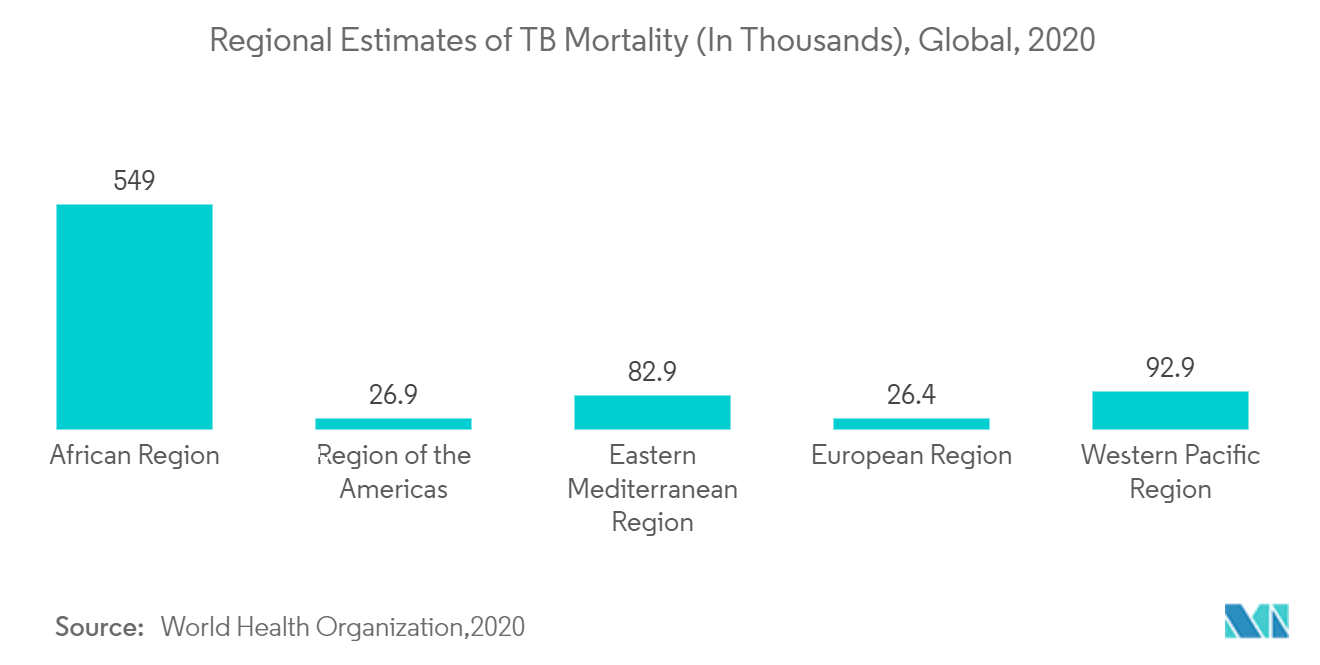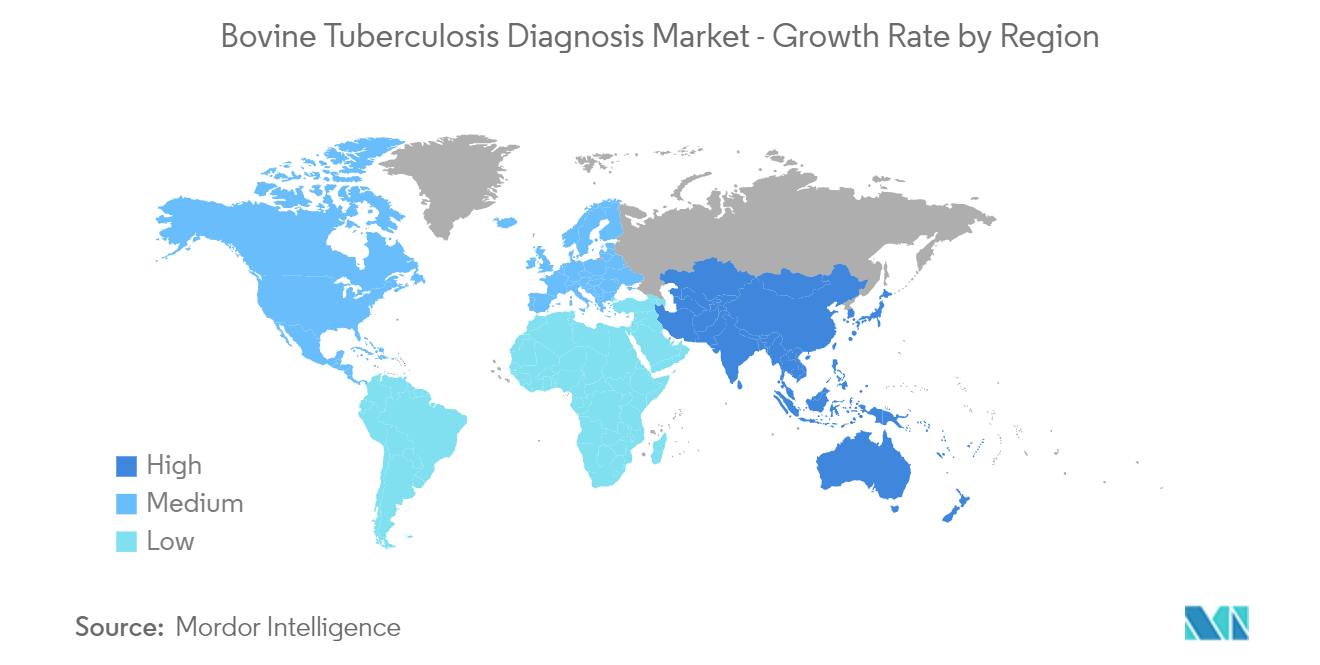Market Trends of Bovine Tuberculosis Diagnosis Industry
This section covers the major market trends shaping the Bovine Tuberculosis Diagnosis Market according to our research experts:
The Molecular Diagnostic Tests segment is Expected to Witness Growth Over the Forecast Period
The molecular diagnostics tests segment has recently expanded due to molecular methodologies offering numerous advantages, such as usefulness in the identification of target molecules and, in comparison to standard traditional culture methods, faster turnaround times from receipt to result in reporting, as well as a broader range of applications.
Moreover, the rising focus on developing technologically advanced diagnostic devices and increasing product launches are also contributing to market growth. For instance, in July 2020, Mylab launched a machine to automate molecular diagnostic tests, a compact bench-top machine that will automate lab processes from sample handling to preparing reverse transcription polymerase chain reaction (PCR)-ready tubes.
Furthermore, government and private collaborations for the development of novel molecular diagnostics are expected to drive the growth of the studied segment over the forecast period. For instance, in August 2022, 3EO Health licensed Wyss Institute technology from Harvard and announced that it is currently developing at-home molecular testing with PCR-grade sensitivity and antigen test-level cost. Therefore, the Molecular Diagnostic Tests segment is expected to witness significant growth over the forecast period due to the above-mentioned factors.

North America is Expected to Dominate the Bovine Tuberculosis Diagnosis Market Over the Forecast Period
North America held a notable market share of the bovine tuberculosis diagnosis market during the forecast period. The high share of the region is due to the significant presence of key players, the implementation of numerous tactics developed by leading corporations to broaden their market reach, as well as expanding research activity, diagnostic rates, the animal population, and veterinary care costs.
Another factor driving the growth of the market for bovine tuberculosis diagnosis is the increase in the number of veterinary clinics in various countries that are staffed by veterinarians who are qualified and licensed. For instance, in October 2020, the National Tuberculosis Eradication Program, conducted by the U.S. Department of Agriculture's Animal and Plant Health Inspection Service, state animal health agencies, and U.S. livestock producers, will have nearly eradicated bovine TB from the nation's livestock population since the program's inception in 1917. The presence of bovine TB in humans has also been reduced because of several factors, including the eradication program and the pasteurization of milk.
Furthermore, strategic initiatives by government and private companies, as well as the rising prevalence of bovine tuberculosis diseases, are driving growth in the North American region.For instance, in March 2022, according to the United States embassy and consulates in Mexico, the United States ambassador launched a new five-year project in California to vaccinate cattle against bovine tuberculosis to protect dairy cows, which have adverse economic consequences for the dairy producers as the disease renders cattle less productive.
Additionally, increasing research and development activities around veterinary diagnostics technologies in the region is likely to boost market growth. The advanced strategies initiated by animal health key players to identify novel bovine tuberculosis diagnostic indicators are further enhancing the opportunity for segment growth. The ICMR, for example, launched a study into human-to-cattle TB infections in July 2022, and the prevalence of bovine TB in household cattle across the country since reverse zoonosis is an alarming development. Therefore, owing to the aforesaid factors, the growth of the studied market is anticipated in the North American region.


